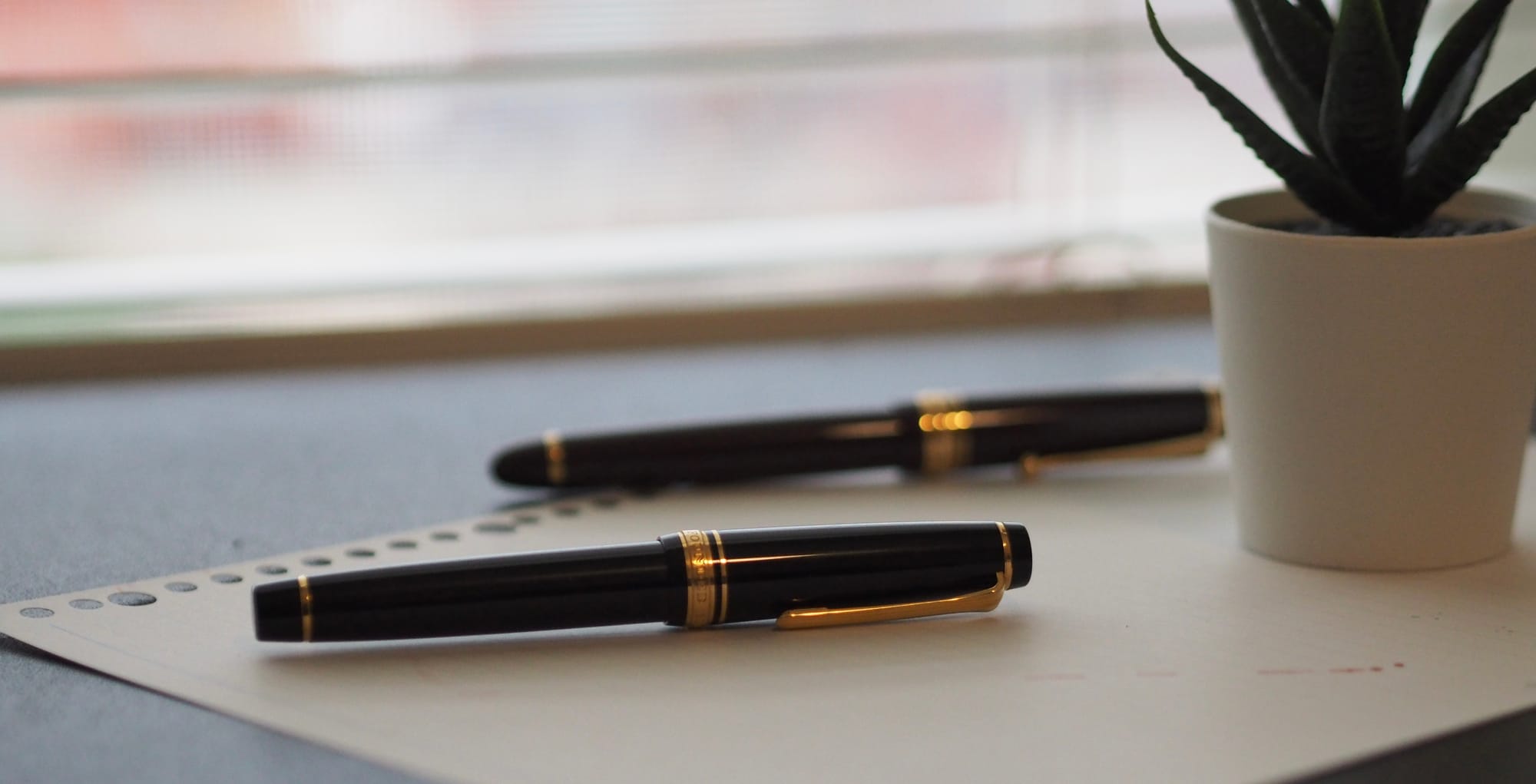Guide: Cartridge Converter Fountain Pens

In the fountain pen world, the most common type of filling mechanism you will see is the cartridge converter. There's a reason for this: the easy-to-use filling mechanism is great for any type of fountain pen enthusiast from those getting their very first pen to seasoned users.
This guide will cover how to use most cartridge converter fountain pens, as well as the benefits and drawbacks of the mechanism.
Operation of the Filling Mechanism
Filling a cartridge converter fountain pen is simple. Most converters on the market can easily be filled by following these steps:
- Fully extend the piston
- Submerge the nib in the ink bottle
- Screw the converter's knob so the piston fully retracts
And that's it! Simple, right?
Something to note is that buying a converter may not always be worth it. For a cheap fountain pen, like the Platinum Preppy, a cartridge may cost more than the pen itself. In addition, some cartridges may also hold too little ink to be worth using, such as the one for the Kaweco Sport. In these instances, eyedropper-converting these pens is the best option. This video by JetPens is great at explaining the process. However, doing this is pretty messy and may be difficult for beginners.
Pros

Unlike more complex options such as a vacuum-filling fountain pen, cartridge converters are simple and easy to operate and clean. Plus, if anything goes wrong with the mechanism, you'll probably only need to buy a new converter instead of servicing it.
These pens also dominate the market. Most of the fountain pens available use a cartridge converter mechanism, so troubleshooting any problems you have with a specific converter should be a breeze. When I first got my Pilot Custom 743, it came with the Con-70 converter. Although I initially struggled to successfully use it, I was able to get it to work because of the well-documented resources out there for these pens.
The prevalence of the cartridge converter also brings another advantage. Pens that cost anywhere from a few dollars to upwards of a thousand dollars can use this type of filling mechanism. When I was first buying a nicer fountain pen, such as the Pro Gear, the familiar mechanism gave me comfort that I wouldn't break the pen.
Cons

Arguably the biggest disadvantage of this filling mechanism is the smaller ink capacity. Usually, cartridges hold ~1 ml of ink at a time, which is only going to last a few pages of writing. That means, for longer writing sessions, you may have to keep an ink bottle around for refilling.
In addition, sometimes cartridges aren't too secure. Although those from Pilot, Sailor, and many respected brands fit securely on the pen, I have had some problems with some of my pens. For example, the converter on my Lamy Scala easily comes off and can create quite a mess. Unlike the Lamy Safari, there isn't any secure way to hold the cartridge in place on the Scala, so it's prone to falling off. I have also experienced this problem with my FPR Triveni Junior.
Finally, I wish there were more cartridge options available for fountain pens. This isn't too much of a con, but it's disappointing when the proprietary converter isn't good quality. I have found that the Sailor converter feels too cheap to be the only option for even their higher-end pens. Unfortunately, many fountain pen companies seem to have proprietary converters with limited options.
Cartridge converter fountain pens are great but can leave more to be desired. Although they're simple and usually easy to operate, their ink capacity is lower than other mechanisms, which calls for frequent refills.
However, they're still the go-to mechanism for beginners, given their relative affordability, widespread availability, and reliability.






Comments ()